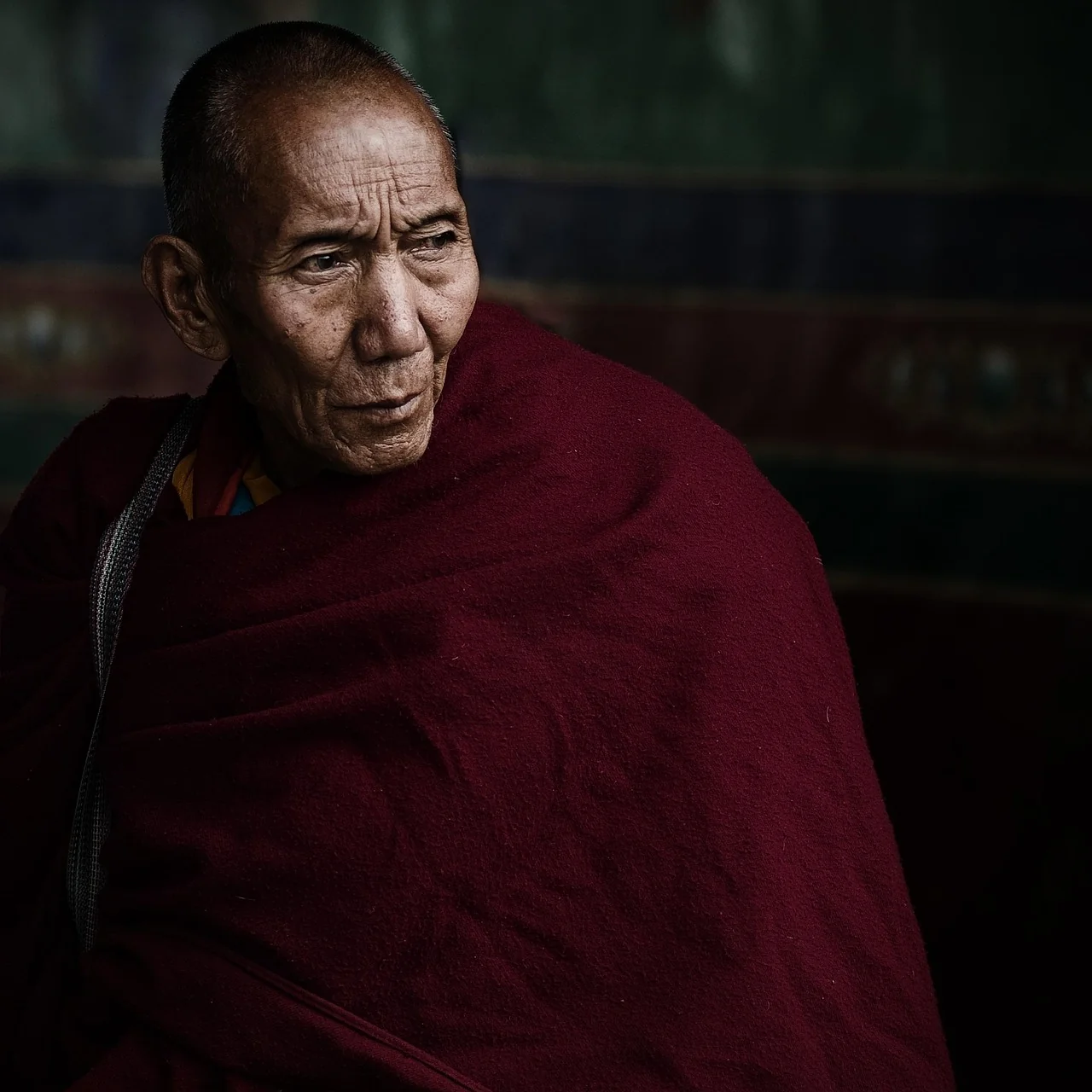Feeling like you’re constantly running on a hamster wheel of stress, with your mind buzzing from one worry to the next? You’re not alone. In our hyper-connected world, the quest to find your inner peace can feel like a distant dream. But what if it’s not? Inner peace isn't about escaping to a remote mountaintop or silencing your thoughts forever. It’s about discovering a profound, unshakable calm that exists within you right now—a steady center you can return to, even amidst life’s inevitable chaos.
This guide is your practical, no-fluff roadmap to that place. We’ll move beyond abstract concepts and dive into actionable steps, demystifying meditation for beginners and offering powerful techniques for those looking to deepen their practice. Get ready to understand why your mind resists quiet, learn how to build a simple yet sustainable routine, and discover how to weave mindfulness into your entire day. Let’s begin the journey from overwhelmed to centered.
What Does It Truly Mean to Find Your Inner Peace?
The phrase "inner peace" might conjure images of a yogi in perfect, silent lotus position. But this idealized version can make the goal feel unattainable. To find your inner peace is not to eliminate all thoughts, emotions, or external challenges. Instead, it's the ability to remain grounded, calm, and aware in spite of them.
Think of it as being the eye of a hurricane. The storm—your deadlines, disagreements, and to-do lists—may rage around you, but at your core, there is a place of stillness and stability. From this place, you can respond to life with clarity and intention, rather than reacting from a place of panic or frustration.
Inner Peace vs. Happiness: Clarifying the Difference
It's crucial to distinguish inner peace from happiness. Happiness is often conditional and transient; it depends on external events going our way. We feel happy when we get a promotion or spend time with loved ones.
Inner peace, however, is unconditional. It's an internal state of acceptance and equanimity that you can access whether you're having a good day or a bad one. It allows you to experience difficult emotions like sadness or anger without being completely overwhelmed by them. Happiness fluctuates, but peace provides the stable foundation from which all emotions can arise and pass.
The Science-Backed Benefits
Cultivating this inner calm isn't just a spiritual pursuit; it's a practical one with proven benefits for your mind and body. A consistent practice to find your inner peace can lead to:
- Reduced Anxiety and Stress: Meditation has been shown to lower cortisol levels, the body's primary stress hormone.
- Improved Focus and Concentration: Training your attention on your breath strengthens your brain's ability to focus, much like lifting weights builds muscle.
- Better Emotional Regulation: By creating space between a trigger and your response, you gain the power to choose how you react, rather than being on autopilot.
- Enhanced Self-Awareness: You begin to notice your thought patterns and habits, which is the first step toward changing the ones that no longer serve you.
Why Your Mind Resists Peace: Understanding the Inner Critic
If inner peace is so beneficial, why is it so hard to achieve? The answer lies in the very nature of your mind. Your brain has a built-in "default mode network" that is active when you're not focused on a task. This network is responsible for your mind's constant chatter—rehashing past conversations, planning future tasks, and generating a stream of thoughts. This is often called the "monkey mind," and it's completely normal.
The Myth of "Stopping Your Thoughts"
The single biggest misconception about meditation is that the goal is to stop your thoughts. This is like trying to stop your heart from beating. It's impossible, and the effort to do so will only create more frustration and noise.
The true goal of a mindfulness practice is not to empty your mind, but to change your relationship with your thoughts. You learn to observe them without getting tangled up in them. Imagine sitting on the bank of a river, watching leaves (your thoughts) float by. You don't have to jump in and chase after every one; you can just let them pass.
How Stress and Overwhelm Create Mental Noise
When you're stressed, your body's fight-or-flight response is activated. This survival mechanism is designed to handle immediate physical threats, but it gets triggered by modern stressors like emails and deadlines. This state keeps your nervous system on high alert, making a cluttered mind feel like the default. Your mind resists peace because it's literally wired for survival, not for tranquility. Recognizing this is the first step in gently, patiently retraining it.
Your Foundation for Peace: A Beginner's Guide to Meditation
Meditation is the primary tool for training your mind and accessing that inner calm. For anyone starting a meditation for beginners journey, the key is to keep it simple and consistent. You don't need special equipment or hours of free time. Start with just 5 minutes a day.
Finding Your Posture
Comfort is paramount. You do not need to sit in a painful cross-legged position on the floor.
- In a Chair: Sit upright with your feet flat on the floor and your back supported. Place your hands comfortably on your knees or in your lap.
- On a Cushion: If on the floor, sit on a cushion to elevate your hips, allowing your knees to rest comfortably below them.
- Lying Down: You can also lie on your back in a "corpse pose" (savasana). Just be aware that you might be more prone to falling asleep.
The goal is a posture that is both alert and relaxed—upright enough to stay awake, but comfortable enough to remain still.
The Anchor of Breath: A Step-by-Step Guide
Breath-awareness is the cornerstone of most mindfulness practice. Here is a simple guide to get you started:
- Set a Timer: Start with 3-5 minutes. Use a gentle alarm sound.
- Settle In: Take your chosen posture and gently close your eyes or soften your gaze.
- Notice Your Body: Bring your awareness to the physical sensations of your body. Feel your feet on the floor, your hands on your lap.
- Find the Breath: Without trying to change it, direct your attention to the natural rhythm of your breath. Focus on the sensation of the air moving in and out of your nostrils, or the rise and fall of your chest or abdomen.
- Anchor Your Attention: Use the breath as an anchor to the present moment. Your entire job is to notice the in-breath and the out-breath.
Dealing with Distractions
Your mind will wander. This is not a sign of failure; it is the entire point of the practice. The moment you realize your attention has drifted to a thought, sound, or bodily sensation, simply acknowledge it without judgment.
You can mentally note, "thinking," "worrying," or "planning." Then, with a gentle and kind attitude, guide your attention back to your breath. This act of noticing and returning is the rep that strengthens your mind's muscle for focus and peace.
Beyond the Basics: Powerful Techniques to Deepen Your Practice
Once you feel comfortable with basic breath awareness, you can explore other techniques. Different methods resonate with different people, so experiment to see what helps you best find your inner peace.
Body Scan for Deep Relaxation
This technique is excellent for releasing physical tension and connecting with your body. Lie down on your back and bring your awareness to the toes of your left foot. Notice any sensations there—tingling, warmth, pressure. Then, on an exhale, consciously release any tension in your toes. Slowly, methodically, move your attention up through your left foot, ankle, calf, knee, and thigh, repeating the process. Continue this scan through your entire body, part by part.
Loving-Kindness (Metta) Meditation
This practice cultivates compassion for yourself and others, which can dissolve feelings of anger and isolation. Start by sitting quietly and bringing to mind someone you easily love and respect. Silently repeat these phrases toward them: "May you be happy. May you be healthy. May you be safe. May you live with ease." After a few minutes, direct these same phrases toward yourself, then toward a neutral person, and eventually, even toward someone you have difficulty with. This is a powerful form of meditation for peace and love that can profoundly shift your perspective.
Using Guided Meditations
If you find it challenging to practice on your own, guided meditation is a fantastic tool. An instructor's voice will lead you through the process, offering prompts and reminders. This is an excellent way for a meditation for beginners practice to gain momentum. You can explore a dedicated session for this in our guided meditation inner peace resource.
- Apps: Calm, Headspace, and Insight Timer offer thousands of guided sessions for all levels and goals.
- YouTube: A simple search for "guided meditation for anxiety" or "5-minute body scan" will yield countless free options.
Integrating Mindfulness: How to Find Your Inner Peace All Day Long
The true power of this practice is revealed when you can carry it off the meditation cushion and into your daily life. The goal is to make mindfulness a continuous thread woven through your day.
Start by choosing one or two routine activities to become your "mindfulness anchors." For these activities, your sole purpose is to be fully present.
- Mindful Coffee Drinking: Instead of scrolling on your phone, feel the warmth of the mug. Smell the aroma. Taste the flavor on your tongue.
- Mindful Walking: Feel the sensation of your feet connecting with and leaving the ground. Notice the air on your skin. See the colors and shapes around you.
- Mindful Tooth Brushing: Pay attention to the taste of the toothpaste, the sensation of the brush on your teeth, the sound of the bristles.
When you feel stress rising during the day, use "mini-meditations." Take just one minute to stop what you're doing, close your eyes, and feel three full cycles of your breath. This acts as a system reset, pulling you out of the chaotic narrative in your head and back into the reality of the present moment. Embracing moments of silence is peace, even for a minute, can be a powerful reset.
Another powerful integration is the "STOP" method, usable anytime, anywhere:
- S - Stop what you are doing.
- T - Take a deep breath.
- O - Observe your body, emotions, and thoughts without judgment.
- P - Proceed with more awareness and intention.
Building a Lasting Habit: Consistency Over Perfection
The journey to find your inner peace is a marathon, not a sprint. What matters most is not the length of any single session, but the consistency of your practice. For a more detailed roadmap on making this a personal journey, see our guide on how to find inner peace with yourself.
A common trap is the "all-or-nothing" mentality. If you miss a day, or even a week, the practice isn't ruined. Simply begin again. There is no such thing as a "bad" meditation. Every moment you spend observing your mind, whether it feels calm or chaotic, is a step forward.
Start with a small, non-negotiable commitment. "I will practice for 5 minutes, five days a week." Tie it to an existing habit, like after your morning coffee or right before you brush your teeth at night. This technique, known as "habit stacking," makes it much easier to maintain.
Be your own best friend on this journey. If you find your mind is especially busy, instead of criticizing yourself, offer kindness. A simple, "It's okay, this is how it is right now," can be profoundly soothing to your nervous system. This self-compassion is not a deviation from the path; it is the very essence of it. Your inner peace was never lost; it was only waiting for you to turn your attention inward and discover it, one breath at a time.
In a world of constant noise and demand, the journey to inner peace is not a luxury but a necessity for our well-being. The practices explored—from mindful breathing and digital detoxes to gratitude journaling and time in nature—are not complex secrets, but accessible tools. They remind us that peace is not a distant destination to be reached, but a quality to be cultivated in the present moment, regardless of external circumstances. True serenity is found not by eliminating all life’s challenges, but by changing our relationship to them, fostering a resilient and compassionate inner anchor. This is a personal and ongoing practice, not a final achievement. Begin today by choosing just one small technique that resonates with you. Carve out a few quiet minutes to simply be. With consistent, gentle effort, you can build an unshakable foundation of calm that supports every other aspect of your life. Your more peaceful, centered self is waiting to be discovered.



